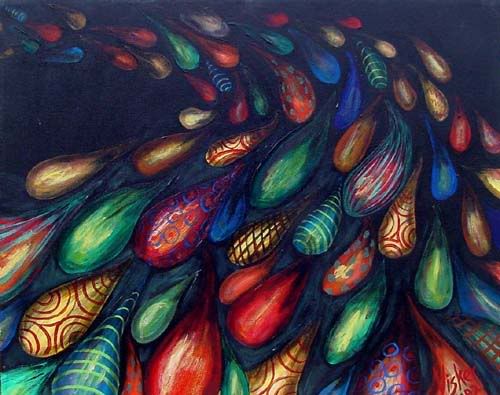Thursday, February 18, 2010
the face is definitely the boldest part of the piece. It stands out the most, especially with all the lines that were used to create the different parts of the face. I like how the lines used to make an outline of the circles for the eyes continues down into parts of the nose. This also put more emphasis in this area which draws the viewer's eye towards this area.
Museum
I saw Renée C. Byer’s photos. The pictures were very energetic. The pictures looked like they were sad or more like upset for some reasons. I felt little uncomfortable when I see them. Many of them were black and white. Also the subject and titles were shocking like ‘murdered parents’ and etc.
There was a picture that sick kid and his mother were hugging. It gave me uneasy and anxious feeling rather than peaceful or happiness. Its dark color, mother’s wrinkle and closed eyes were very effective. The child’s arms and position was making uncompleted hug and kind of diagonal lines. They were making it unstable. Its title is "The Sacramento Bee" by Renée Byer.
Panorama of Hudson River- Greg Miller
 Although I've heard about Dorsky museum and lots of people asked me the directions of this building, I never been to Dorsky museum before. I was excited to see the artwork of the artists.
Although I've heard about Dorsky museum and lots of people asked me the directions of this building, I never been to Dorsky museum before. I was excited to see the artwork of the artists. Tuesday, February 16, 2010
Andy Warhol- 100 cans
This Week's Post
Cezanne

http://www.expo-cezanne.com/1_3.cfm?id=-1656112551
This is "Still Life with Peppermint Bottle" by Cezanne. It is painted during 1890- 94, size 65 x 81 cm, oil on canvas. It has bluish color all over and apple's bright colors hold my eyes. The white clothe is also helping its contrast. Some interesting patterns are making it lively.

Judith Visker’s “Colored Rain” struck me as an interesting pattern painting. The droplets of ‘colored rain,’ which appear to swim like a shoal of brightly colored fish in a dark ocean, each contain their own pattern, at once just similar enough to another in the group to tie them all together, and just different enough to stand out against the darkness. The colors are vivid and intense, making the piece eye-catching, and the fluid motion of the group draws your eyes along the flood of droplets, adding a dynamic that is altogether interesting.
Monday, February 15, 2010
Thomlinson Park Court - Frank Stella (1959)
 This piece was fairly boring to me until I started reading a bit about the artist. The absolutely amazing thing about this piece is that all of the white lines are actually thin sections of unpainted canvas. The black is house paint applied with a fairly large brush. The concentric rectangles make me feel like I'm either looking down a hallway or have an Aeriel view of an Aztec step pyramid. The focal point is obviously the center, the eye pulled to the center of the canvas. Still, more geeking out about the method rather than the result.
This piece was fairly boring to me until I started reading a bit about the artist. The absolutely amazing thing about this piece is that all of the white lines are actually thin sections of unpainted canvas. The black is house paint applied with a fairly large brush. The concentric rectangles make me feel like I'm either looking down a hallway or have an Aeriel view of an Aztec step pyramid. The focal point is obviously the center, the eye pulled to the center of the canvas. Still, more geeking out about the method rather than the result.

Radial Symmetry Pattern

Photography art by Brian Auer, information is on the webpage here:
http://www.fineartphotoblog.com/nature/radially
The symmetry is clear and since the focal point of the photo is the lower right area, it is not perfectly balanced. It is a bit asymmetrical for that reason. the eye is drawn downward right and at the same time is drawn outward from the center of this plant.
Sunday, February 14, 2010
 Andy Warhol was one of the
Andy Warhol was one of the "double T pattern"

this pattern looked really cool to me. It is a quilt that was made by somebody called E.L. The quilt is called "Double T Pattern". The blue line that borders the quilt is not actually supposed to be there, that happened when i copied the image from the website. I liked the quilt design because no matter which way you pick it up, there is something different to look at. The first thing that stood out to me was the black diamonds that are formed by the white diamonds that have the "double t" inside. An argument that can be made from this quilt is whether the white diamonds have fusion, creating the black diamonds, or vice versa. I like how the quilt is only black and white, and doesn't have any other colors. I think that if there were any other colors, the attention would shift, and not be on the double t's as the title suggests.
